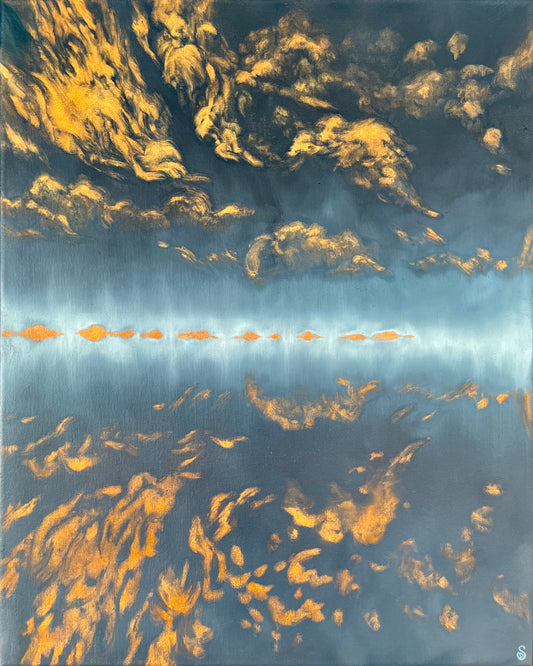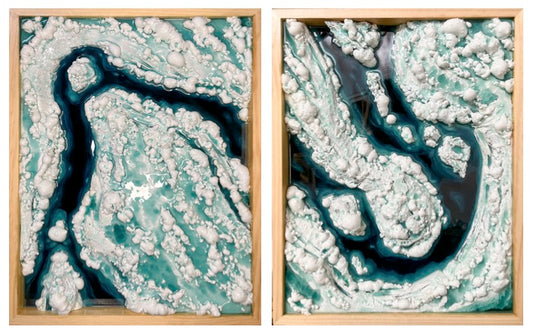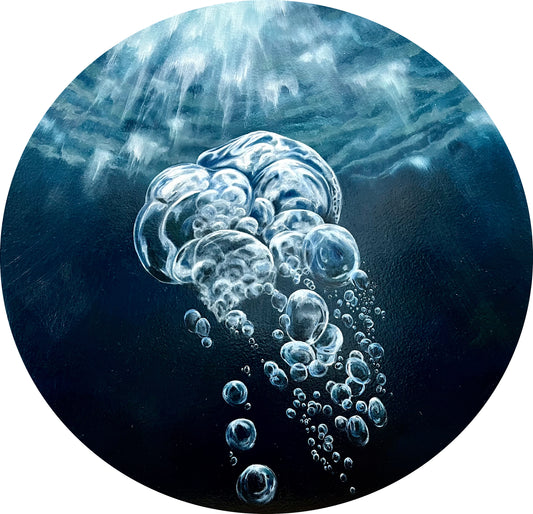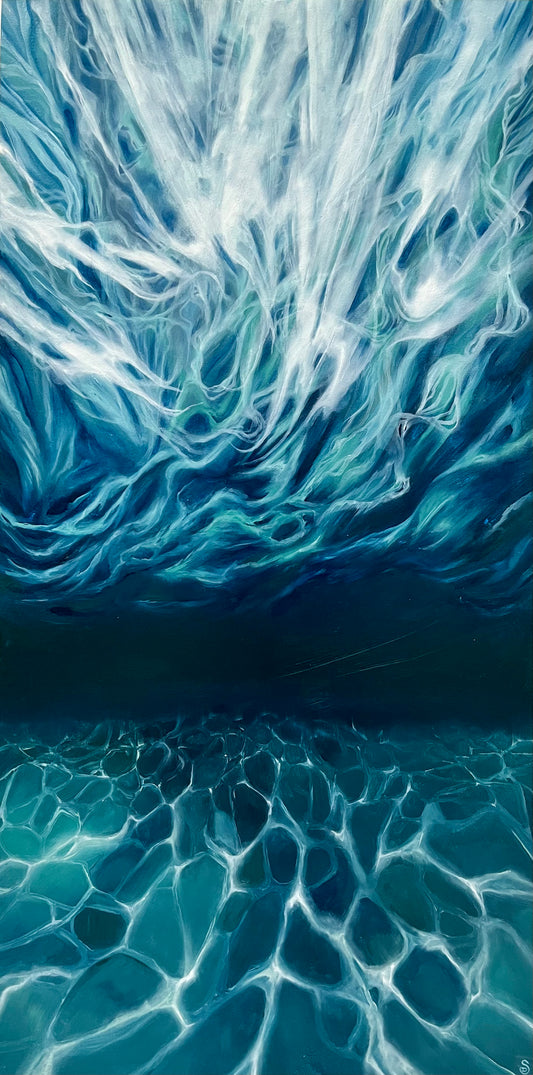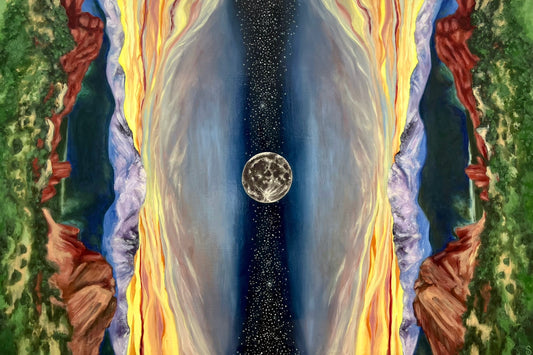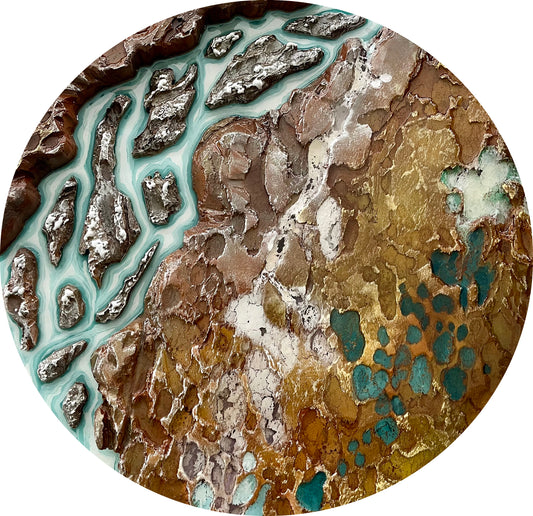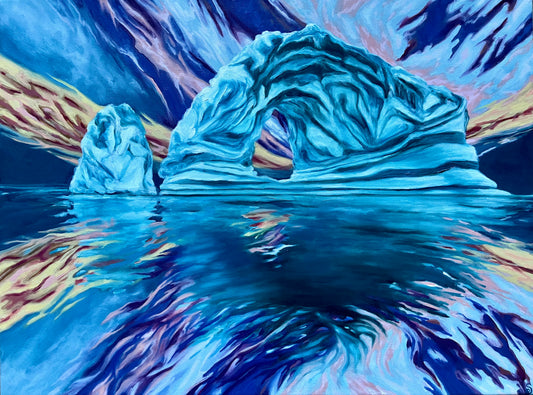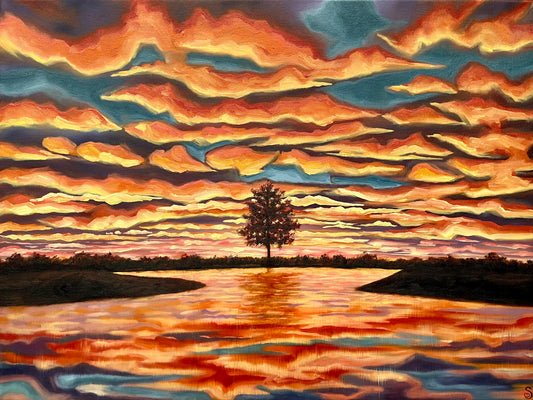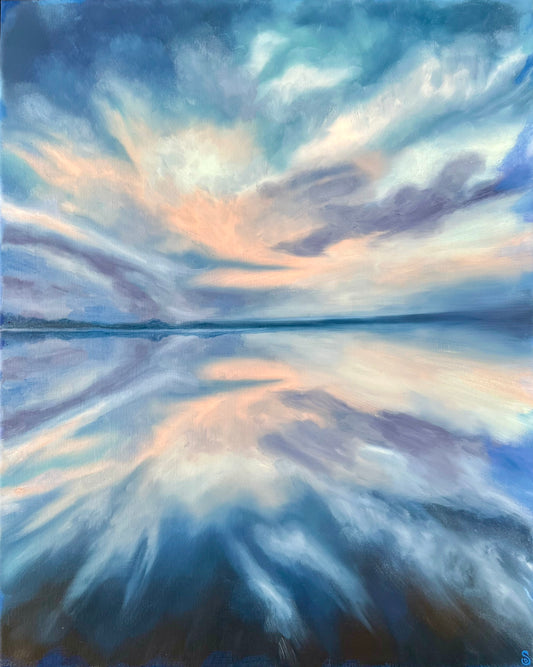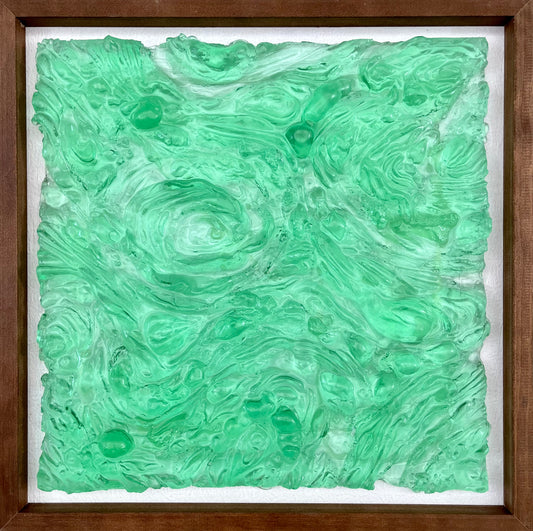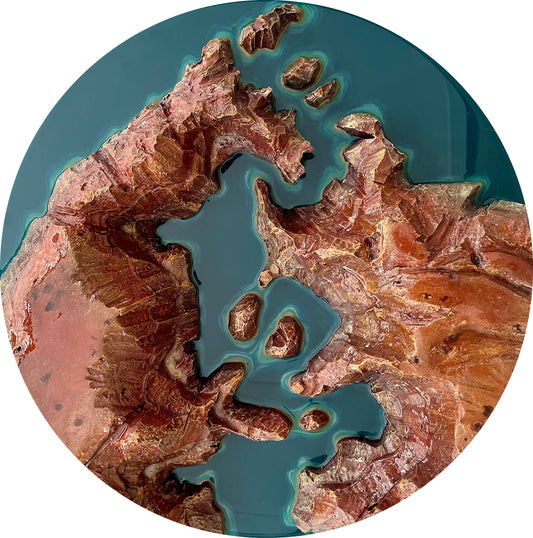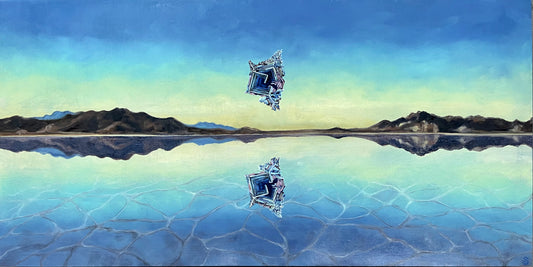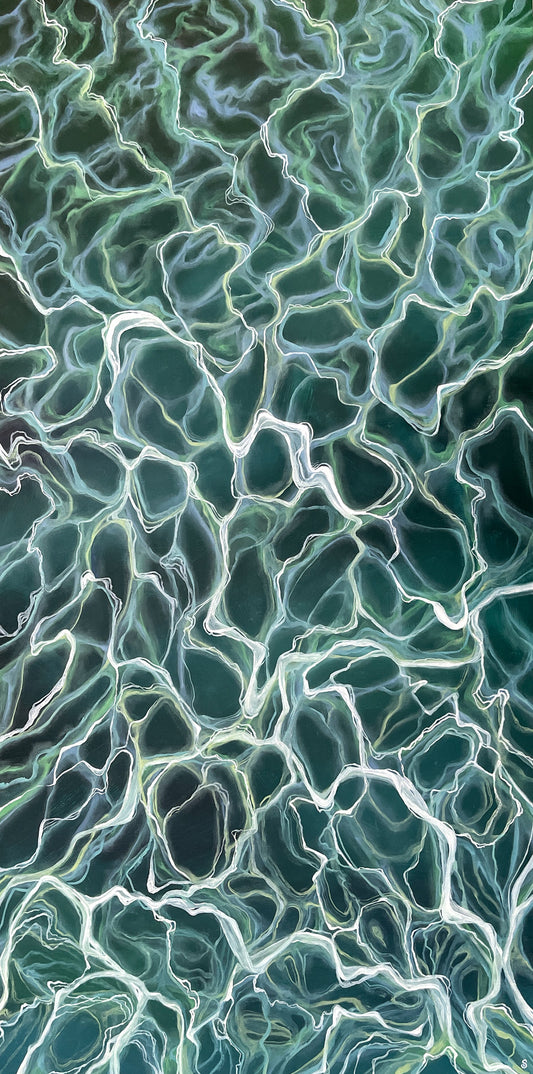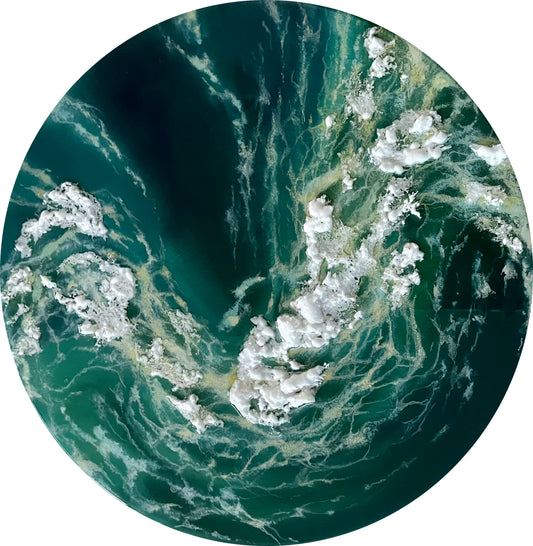Collection: Shannon Dunn - Paradox
The word “paradox” comes from the Greek word paradoxos, which means “to think beyond,” or “contrary to belief.” Paradoxes encourage us to contemplate our everyday understanding of language, context and experience. It provides the opportunity to look deeper into the layers of our life and world and invites us to think beyond what we see.
Paradox plays out in the natural cycles of our earth. The same patterns that occur in our world happen within the human experience. Drought and flood. Freeze and thaw. Ebb and flow. Above and below. Light and dark. Birth, death…rebirth. We are a part of nature not apart from it. My artwork highlights the fragile beauty of our world and humanity’s place within it.
The artwork in this collection are all variations on landscape in which the observer is invited “to think beyond” appearance. The art format is turned askew through mirror images, inverted reflections, or aerial and underwater views. The use of a circular composition where a rectangle is the norm; or a three-dimensional relief sculpture where one might expect a two-dimensional painting is utilized to take the viewer out of the typical frame of reference. I invite a shift in viewpoint.
The key to all understanding is perspective. I hope to invite participants to contemplate an alternate angle displayed in nature and apply those same concepts within their life. A different framing permits an imaginative shift in outlook of not only physical geography but of the internal, emotional landscape of the human heart and mind.
The duality and unity of opposites as it's played out in nature works the same within us. Two seemingly contradictory things can both be true. Physical and spiritual. Reality and imagination. Love and pain. Movement and rest. Peace and chaos. Joy and sadness. Wholeness can be found in holding and accepting them both.
To live with paradox is one of the most complex yet universal human experiences. It doesn’t fit nicely into traditional constructs yet the more one contemplates it, the more it seems to permeate all of life. We live in an “either/or” culture but the truth is found in the “both/and.” As I created this body of artwork, I have wrestled with this paradigm. It was in the struggle that I have learned to accept paradox. In the surrender of things I cannot change, I have found the freedom I have been longing for all along; a paradox in and of itself.
-
Approach and Retreat
Vendor:Shannon DunnRegular price $2,800.00Regular priceUnit price / per -
Bolivian Gold
Vendor:Shannon DunnRegular price $800.00Regular priceUnit price / per -
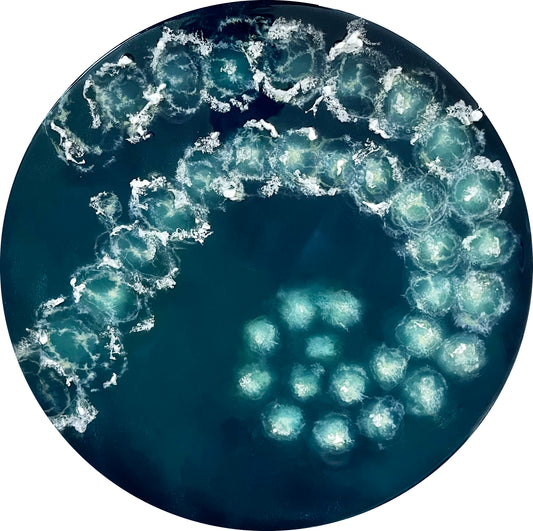 Sold
SoldBubble Net
Vendor:Shannon DunnRegular price $425.00Regular priceUnit price / per -
Concentric in Seafoam
Vendor:Shannon DunnRegular price $400.00Regular priceUnit price / per -
Confluence of the Green and Colorado Rivers: Canyonlands National Park, UT
Vendor:Shannon DunnRegular price $1,100.00Regular priceUnit price / per -
Continuity
Vendor:Shannon DunnRegular price $1,200.00Regular priceUnit price / per -
Crevasse: Chugach National Forest, Alaska
Vendor:Shannon DunnRegular price $2,250.00Regular priceUnit price / per -
Emerald Canyon
Vendor:Shannon DunnRegular price $2,250.00Regular priceUnit price / per -
First Light
Vendor:Shannon DunnRegular price $2,800.00Regular priceUnit price / per -
Heaven Meets Earth
Vendor:Shannon DunnRegular price $2,100.00Regular priceUnit price / per -
Hofsjökull Glacier, Iceland
Vendor:Shannon DunnRegular price $1,400.00Regular priceUnit price / per -
Horseshoe Bend of The Colorado River: East Rim of the Grand Canyon, AZ
Vendor:Shannon DunnRegular price $1,100.00Regular priceUnit price / per -
Ice Mirror
Vendor:Shannon DunnRegular price $1,100.00Regular priceUnit price / per -
In the Morning Light
Vendor:Shannon DunnRegular price $1,100.00Regular priceUnit price / per -
Milk and Salt
Vendor:Shannon DunnRegular price $1,100.00Regular priceUnit price / per -
Peaks and Valleys in Seafoam
Vendor:Shannon DunnRegular price $400.00Regular priceUnit price / per -
Reflection Canyon: Lake Powell, Utah
Vendor:Shannon DunnRegular price $1,400.00Regular priceUnit price / per -
Salt of the Earth
Vendor:Shannon DunnRegular price $1,600.00Regular priceUnit price / per -
Salt Water in My Veins
Vendor:Shannon DunnRegular price $1,600.00Regular priceUnit price / per

